Hi Guys
Happy New Year and welcome back to my Friday students and fellow artists who drop in to see what I ve been up to this week. Mondays painters please enjoy this and I will be covering your lesson in my next blog .
Well this post will aim to cover "Creating a process to start breaking up the landscape and initiate a familiar pattern of approach each time you come to draw and paint". The aim of developing a process for yourself is to provide you with familiar way of working no matter what subject you find yourself drawing or painting. The process I use has been the result of more than 25 years of teaching from many sources, but I feel a special mention should go to artist Mary Gilkersohn for helping me formalise and simplify the way I work and the way I teach so that I feel confident to teach all.
So folks, this week was first week back for students and I was going back to basics and covering a few general guidelines when thinking about working towards painting landscapes. Below is an illustration of the process I use.
I start by spending time looking at my chosen landscape, this is not a waste of time and is really important. Things I may look for to make things easy for myself are
A good sense of light and contrast.
Strong structure lines, that provide a simple pathway back into the horizon.
Plenty of movement and liveliness in the sky.
I also start with removing any intention of making a masterpiece.
This was taken this morning at the top of Harp hill. It certainly has a cool January feel to it and contains all of the above.
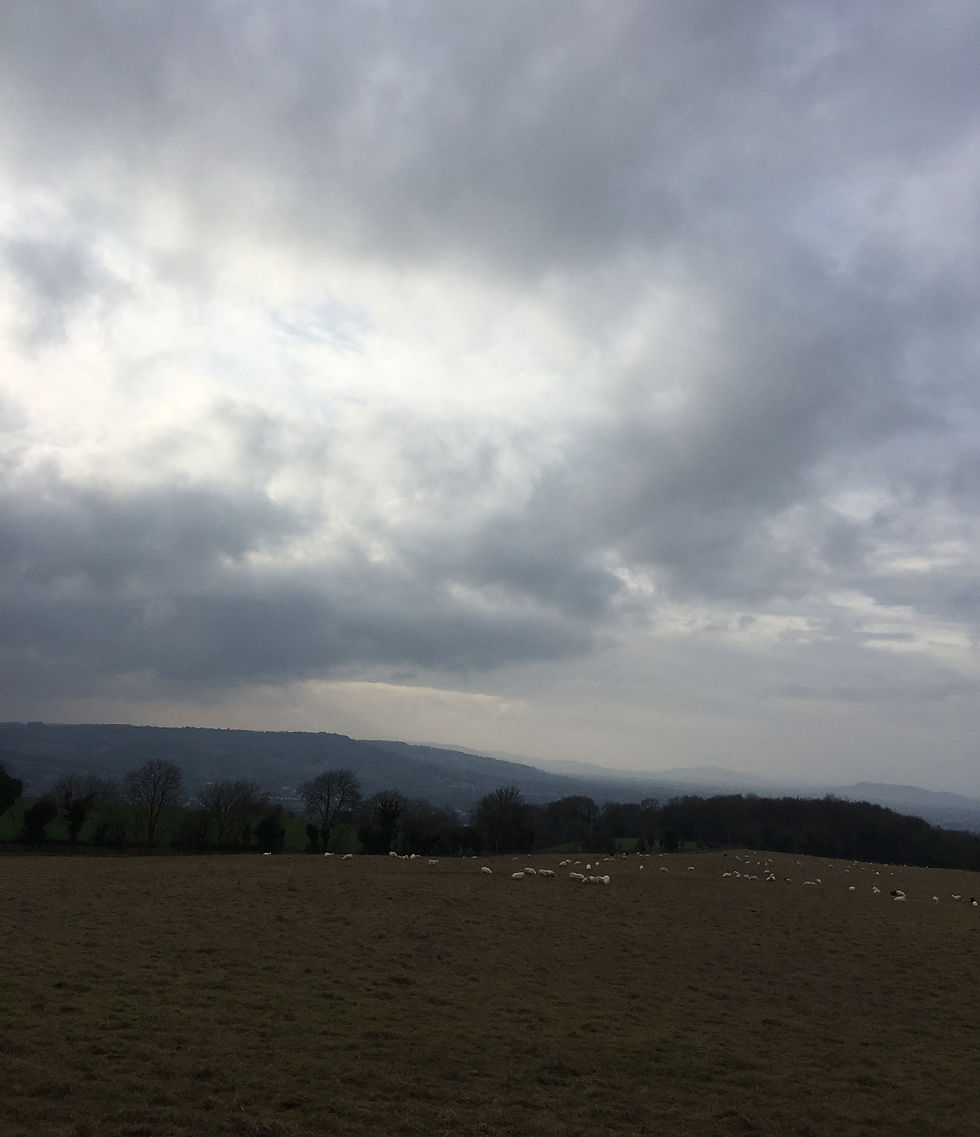
Using the photo above and some of the tools below do have a go at breaking this January landscape down into
A simple structure line drawing
A Tonal drawing using 5 tones,editing from 9
A Notan { a useful simplified black and white pattern, used as a first painting pattern}I will explain further down in more detail.
Below, starting from top left you have the following tools for sketching that you may find useful to add to your drawing and painting kit.
A cotton cloth for rubbing in graphite or charcoal
A soft Putty rubber
Hard rubber
Eraser pen
Sandpaper for sharpening charcoal to a point and graphite
Touchons or paper stumps for pushing graphite and charcoal onto the paper surface creating soft edges
An assortment of graphite pencils in a variety of softnesses [HB being the one of the hardest of graphites, best for lightest line drawing , up to 9B one of the darkest marks for graphite.The graphite gets softer and darker the higher the B rating.]
Charcoal now this comes in vine charcoal that gives you super soft darks .

So just a few guidelines to consider whilst you are looking to break up the space.
Try to avoid cutting your picture in two by placing the horizon line right in the centre of your picture, it tends to make for a dull outcome.
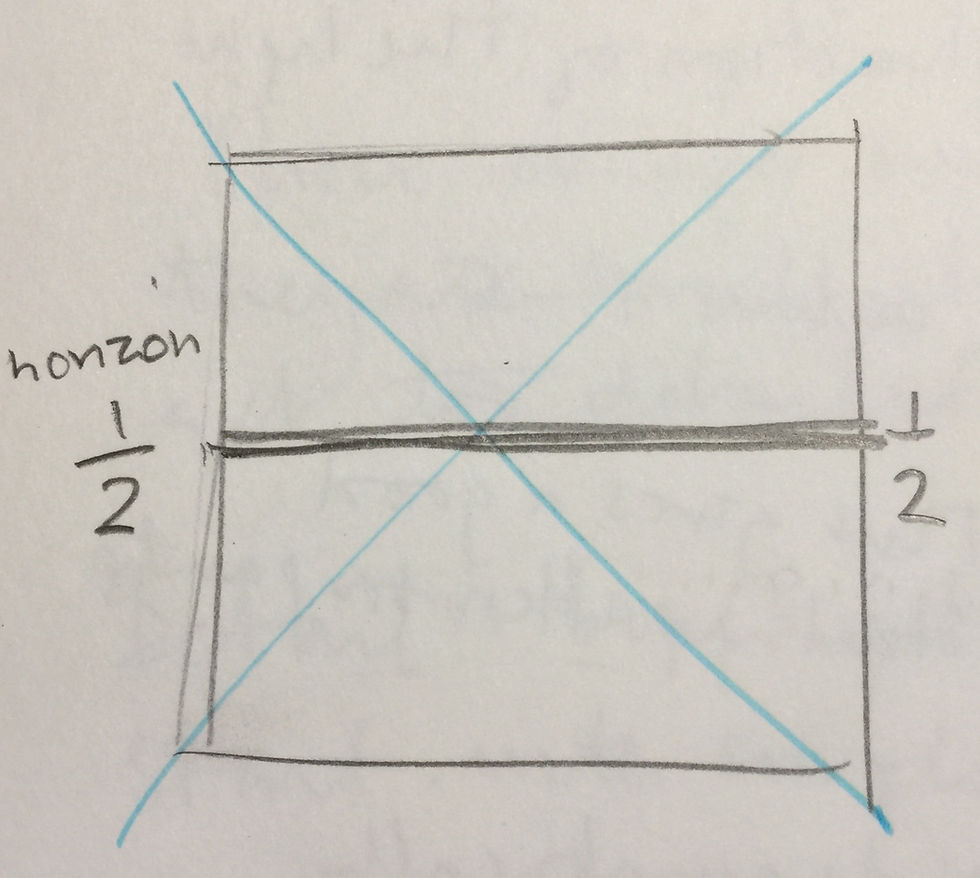
Rather drop the horizon line above or below the centre line as you can see below.

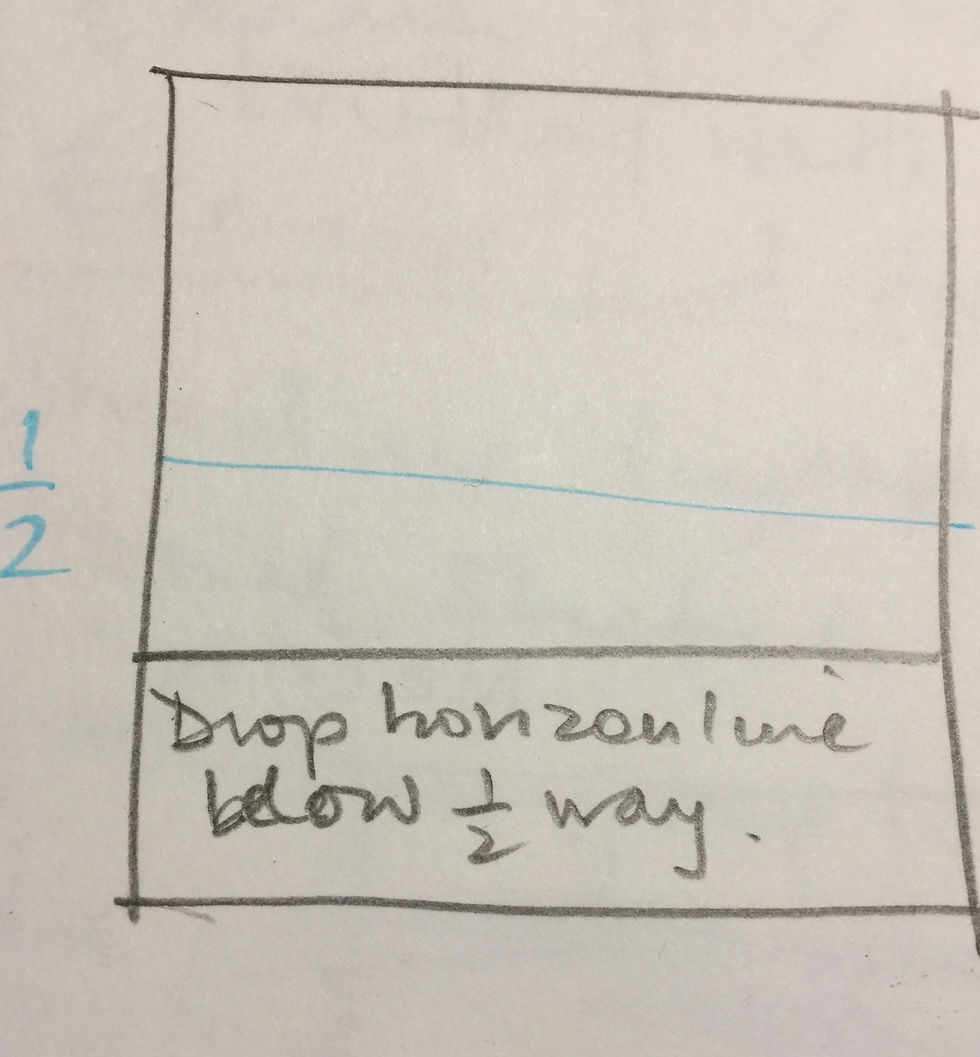
Next consider finding simple pathways and movement around the landscape to keep the viewers eyes moving and engaged.
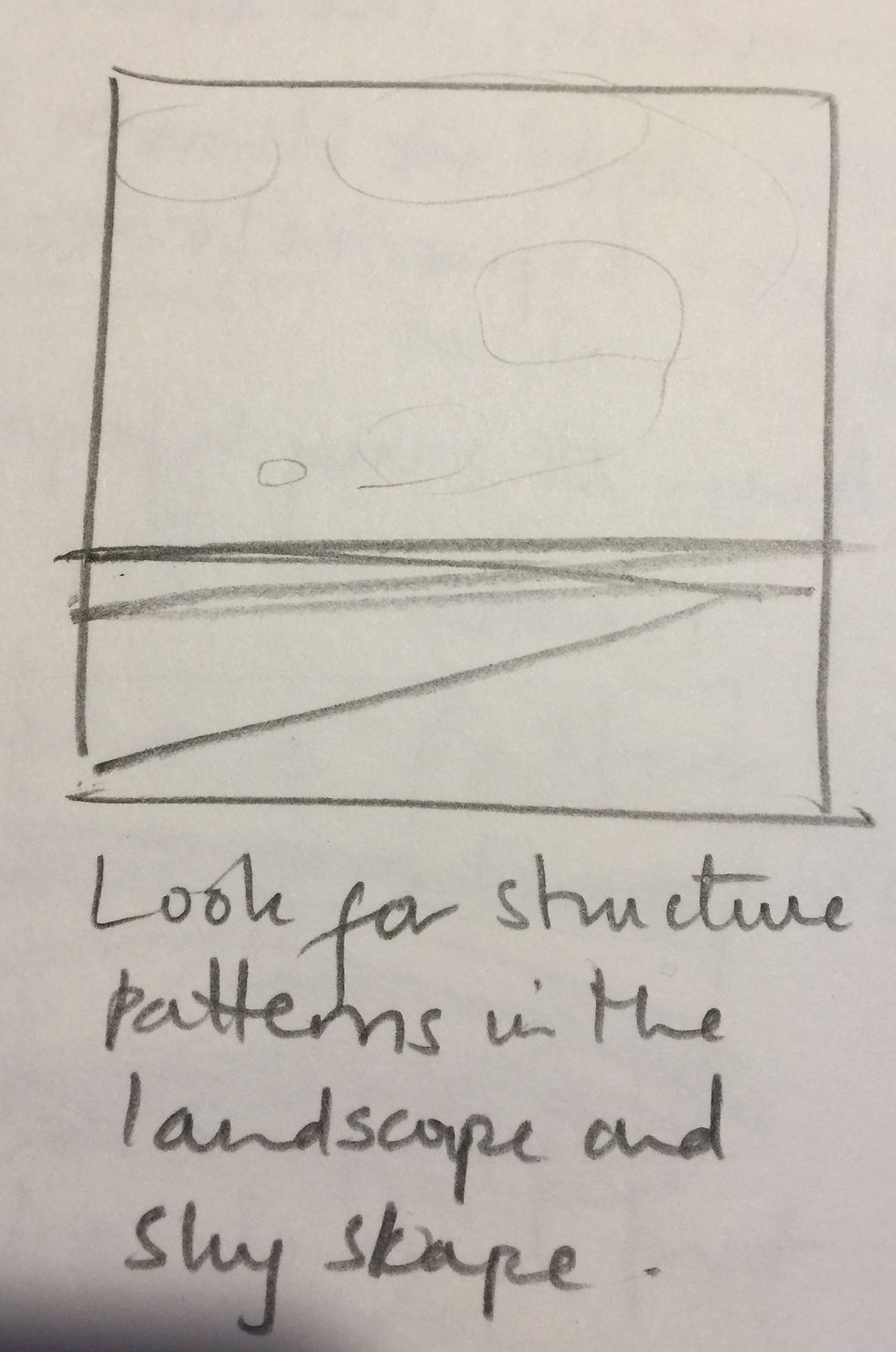
Consider following the rule of thirds, where a focal point is place in at least one of the crosses below.
A focal point might not always be an object placed into the picture plane it could be a change in texture
Contrast
Hue
Temperature of colour
Change in mark

So now I will aim to demonstrate this process using the photo below

Try squinting o cut down the detail whilst you try to see the structure lines and tone I find this particularly useful.

Bare bones done in a thumbnail sketch. Below I have made a five tone scale. Actually there are 9 values of tone from black to white but I am happy with 5 here, To simplify and things . Do try out the facility on your phone to create black and white images it really helps train your eyes to look and see the tone. It may also help to number the tone and build up the picture plane, almost like doing a jigsaw.

So once you have identified your tonal value simplify to 5 to 7 shapes and apply the patches of tone.
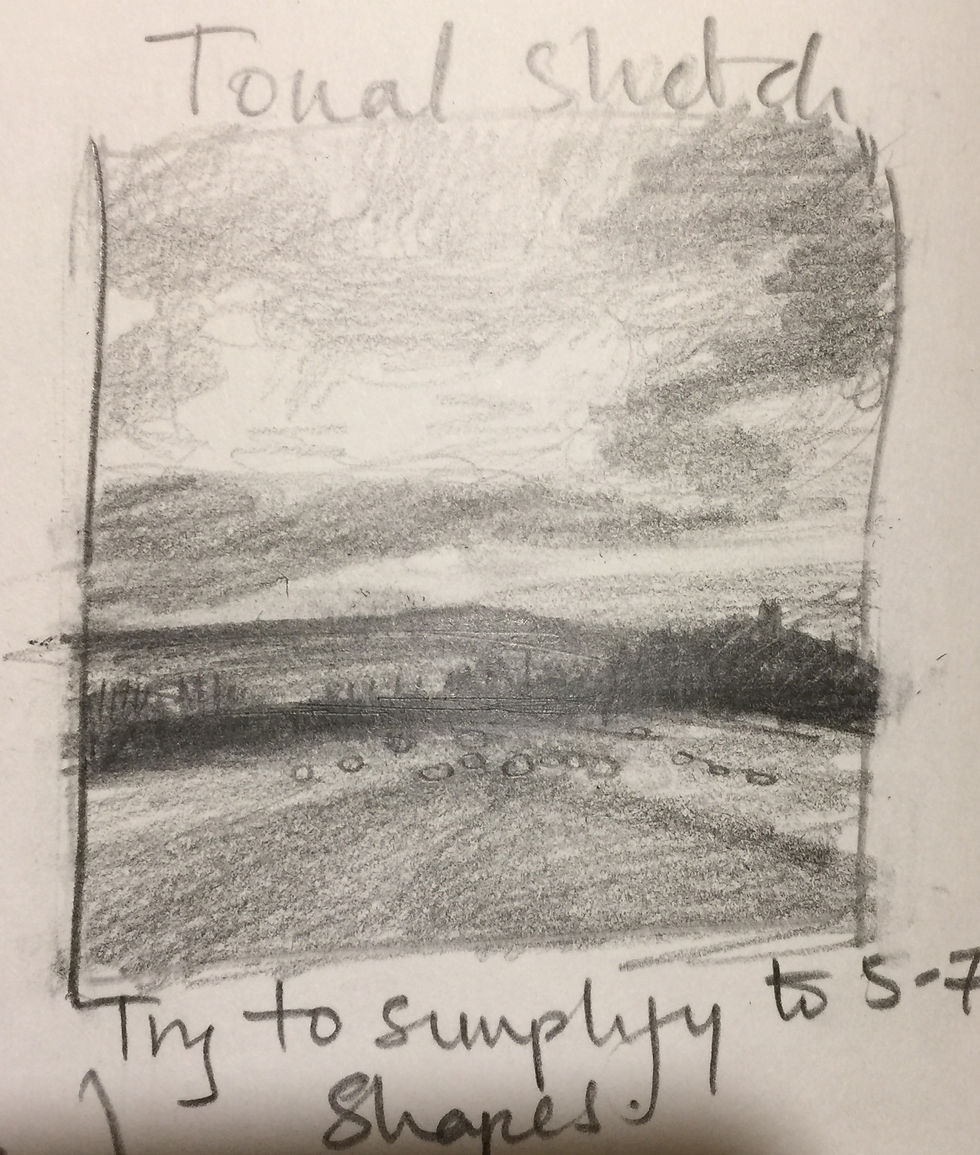
Simplifying again to two tones ,black and white otherwise known as a Notan. A Japanese word for a black and white pattern. This is an important stage to make this pattern work visually as our eyes see black and white before they see colour, this means if this pattern is not visually pleasing it will effect the outcome despite any brilliant use of colour.

You are able to see all three thumbnail sketches here to compare.These are working sketches and are taking no longer than 5 mins to do.

The Notan is then used as the first pattern I paint on the main piece of work before adding colour. I will move on to demonstrate this in the next lesson and blog.
Below I have demonstrated using black card and white Gouache to create a Tonal thumbnail , something different to using a white paper

Do try this process out in your own work and let me know how you get on. Students we will be practising this next Friday and then discussing next stages and using and mixing colour.
Much love everyone and enjoy your painting this week wherever you might find yourself.

